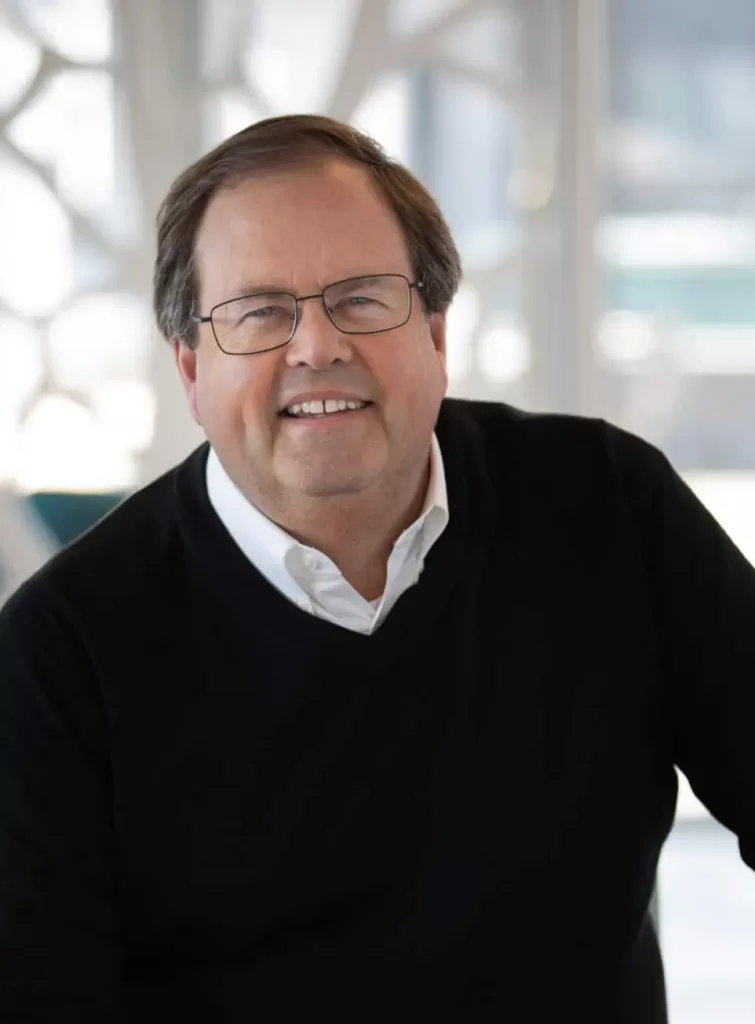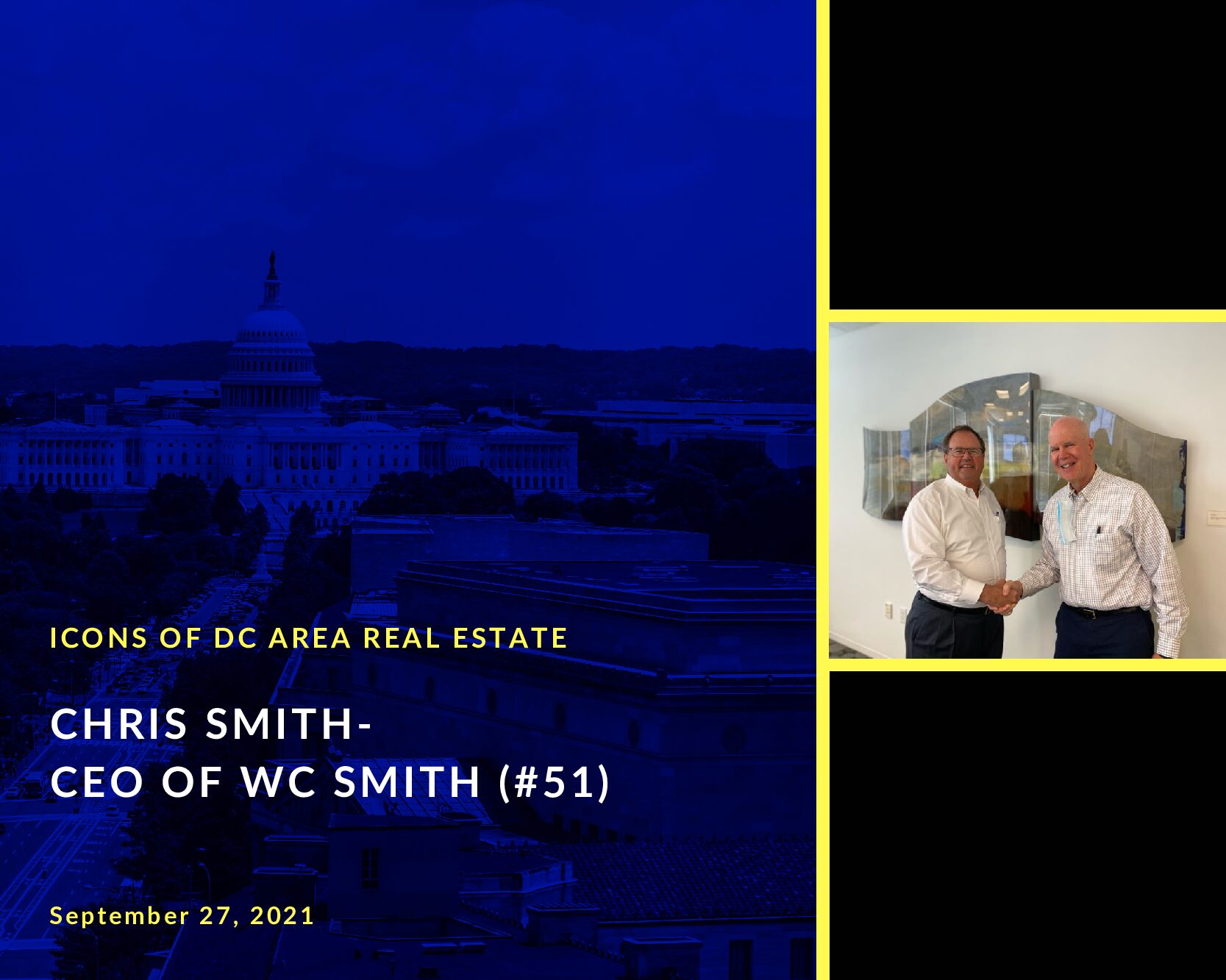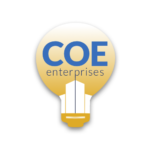

Bio
Chris Smith, CEO of W.C. Smith Company, has led the company to become a DC industry leader in the development of multi-family housing. Initially specializing in the rehabilitation and revitalization of challenged neighborhoods, he has expanded the company’s portfolio to include innovative market rate housing as well as commercial and office developments. With a lifelong commitment to community service, he has fostered a culture within WC Smith of improving the quality of life for residents of the District. Chris joined the company in 1974 which was founded and led by his father, W.C. (Bill) Smith in 1968. Chris attended Villanova University.
Show Notes
Current Role
- Guy who deals with everything that falls through the cracks (3:00)
- Looks at day to day things as well as strategy for the company (3:30)
Origins
- Describes his Dad’s (Bill Smith) career- Started at the Frank S. Phillips Co. as a property manager and became leader of the property management practice there. (5:00)
- His Dad was on call 24/7 for all portfolio issues that came up for Phillips (6:00)
- He went to St. Johns HS and then Villanova University (7:20)
- Played ball at McDonough Gym as a kid and wanted to attend Georgetown and heard about Villanova and applied and was accepted and attended (7:40)
- Every summer he worked at company during college (9:20)
- Dad bought his first building, Richman Apartments, in the 1950s and they still own it near a current project called Archer Park that they built (9:45)
- His Dad bought properties all over the city (10:45)
- Used “Purchase Money Mortgages” to acquire many properties or assume mortgages (11:00)
Company Origins
- Founded In 1968 prior to the DC riots after MLK’s assassination. His Dad formed the company to manage third party and a few of his own properties (12:30)
- Bought Hilltop House ($97,000 for a 92 unit building) in foreclosure (14:30)
- NS&T was trustee for a family that owned 9 properties that had over 1,000 units that they took over management for families (15:10)
- His Dad was known as the “Apartment Doctor” and families decided to hire him to help them managed (16:00)
- Pride about properties’ condition and appearance (16:50)
- Dad proved that one can make a living in property management (17:20)
- Acquire properties that need repositioning and create value (17:30)
- Tenant Opportunity to Purchase Assistance (TOPA) law affected their business plan (18:15)
- Triggered their decision to start building projects (19:30)
- Most of their contractors were renovation type and not “ground up” general contracting (20:00)
- 1989 was first major redevelopment (Twin Oaks) that transitioned the company toward development (21:25)
- 1990-1993 they were one of the most active developers and acquirers of properties, particularly affordable housing (23:00)
- Parklands acquisition was the only loan that NationsBank (Bank of America) accomplished in 1991. Acquired from the Cafritz family who carried back a mortgage (23:10)
- Considerable equity and “sweat equity”- (60% vacancy) tore down units and then redeveloped townhomes with Fannie Mae (25:15)
- Settlement took 3 days because of complicated issues with overdue utilities and damage on site that needed repair (26:45)
- Took over Parklands with one office managing 1100 units that were 60% vacant upon their acquisition (27:30)
- Baltimore expansion (28:45)
- Acquired a building (The St. Paul) in 1979 from Donohoe that had 230 apts. and office space – Paid $5,150,000 and assumed a mortgage (29:20)
- Made a mistake about settlement costs and Clarence Donohoe provided more financing to make this deal happen (30:45)
- 1983 started an all suite hotel business and bought another 60 unit building for first project (32:00)
- Evolved into a corporate housing and suites hotel (32:20)
- Converted the original property bought into an all suites hotel also (33:45)
- Decided to sell both properties in 2011 and get out of hotel business (34:00)
- Acquired a building (The St. Paul) in 1979 from Donohoe that had 230 apts. and office space – Paid $5,150,000 and assumed a mortgage (29:20)
- Parklands Summer Youth Employment Program formed in 1991 (35:45)
- DC was not delivering services for youth including recreation centers or field maintenance (36:00)
- Started program for parents to sign up children to begin cleaning up sites around properties (36:45)
- Has evolved into help with all property management tasks for 14-18 yr. old youths (37:15)
- Incorporated other properties into the mix (38:00)
- THEARC is now the headquarters for the Summer Youth Employment Program (39:00)
- Town Hall Education, Arts and Recreation Campus (THEARC) (40:20)
- Tied to Villages at Parklands (41:00)
- A now three building complex on leased land from DC that houses 14 non-profit entities
- Splash Park in Parklands– Fannie Mae contributed to it (42:15)
- Two block walk away from THEARC
- Original plan was to build a gym with the Splash Park (43:30)
- 400 kids showed up for Splash Park at opening with another 400 kids looking in and not being residents of Parklands (43:50)
- This stimulated the formation of the non-profit, Building Bridges Across the River, to source other non-profits to join into a new building (45:00)
- Covenant House (30,000 s.f.) was first building (46:50)
- Main Building (THEARC East) (86,000 s.f.) was built to include 9 non-profits originally for a long term commitment
- New Building (THEARC West) (92,000 s.f.) recently completed to include Children’s Hospital
- DC Central Kitchen is now part of the mix (48:15)
- Ayers St. Gross architects designed first two buildings and the architect (Jim Palmer) who left to design both the third and upcoming fourth building (49:20)
- Design of property by ASG was done because of their experience with school design and working with the non profits to design their particular spaces (51:30)
- Theatre, Dancing Studio, Middle School, full gymnasium (Boys & Girls Clubs), DC Central Kitchen, Children’s Hospital, GW/Corcoran Art Museum (53:00)
- Frederick Douglass animatron story– build him for the theatre (54:00)
- Robot of Frederick Douglass telling his story (55:30)
- Land lease story with DC Government and National Park Service on 16.5 acres (57:50)
- Model to operate property is a shared obligation of costs among the now 14 non-profit entities. (59:00)
- NationsBank, Fannie Mae and W.C. Smith put up $300,000 each to seed the project (1:00:50)
- Financial Control Board times caused no investment at all especially East of the Anacostia River (1:01:45)
- Tony Williams helped making changes to finances to help with funding needs (1:03:00)
- Adrian Fenty focused on education (1:03:30)
- Smith help Ballou HS and Garfield Elementary to repair and fund improvements that the City had not done (1:03:50)
- Story about renovations and conditions that were deplorable
- Smith Company has been a great support for Ward 8 (1:05:45)
- Oxon Run was not maintained and became a dump for tires and became a drug haven (1:06:20)
- Fannie Mae helped fund a clean up and repair of disrepaired amphitheater (1:07:00)
- New ballfield built (1:08:00)
- 1/2 mile from THEARC (1:08:50)
- For Sale housing- Oxon Creek (1:09:00)
- Sold 210 townhomes from $99,000-$140,000 in Parklands (1:09:45)
- Created a “homebuyer’s club” to help buy homes (1:10:45)
- Resales at $300,000 now (1:11:50)
- Diversified to office development
- Story about relocation to Capital Waterfront (1:12:30)
- Competed for Woodies Building but lost to Jemal (1:13:00)
- Acquired 225 Virginia Ave., SE and lot adjacent to it and leased it to a company that improved for new tenant (1:13:45)
- Adjacent land was developed into “The Collective” project (1:14:50)
- Became aware of relocation of NAVSEA (1:15:45)
- Built office building in JV with Spalding & Slye (1:16:15)
- Decided to relocate from 13th and I St. NW to 1100 New Jersey Ave. SE (1:17:00)
- Canal Park project was former bus terminal in the Capital Riverfront area (a three block site) (1:19:00)
- $5MM proffered to build a 3 block park that Smith Co. built together with New Market Tax Credits to help (1:19:20)
- Story about relocation to Capital Waterfront (1:12:30)
- Smith goes “all in” on a neighborhood where they develop (1:21:15)
- Sheridan Station on Suitland Parkway was developed (336 homes-multifamily and townhouses) (1:22:00)
- Construction job opportunities offered (1:23:30)
- Skyland Town Center
- Decided to set up the Skyland Workforce Center together with Gary Rappaport, his partner at Skyland (1:24:00)
- This is setup to teach and employ workers for project (1:24:45)
- Employment agency (1:25:00)
- Partners helping with teaching prospective employees on site (1:26:00)
- Now an extension of THEARC (1:26:30)
- 20 years in the making (1:27:00)
- Gary Rappaport brought in Smith to do the multifamily after NCPC determined that they wanted residential on the site (1:27:50)
- First Phase now open- The Crest is the first new rental project built east of the Anacostia in 40 years (1:29:00)
- Retail now 50% leased with CVS and Starbucks
- Phase 2 with Lidl grocery store
- Residential is 45% leased now with workforce housing- 80% of AMI (1:30:00)
- Opens opportunities for tenants that have higher income than “affordable” housing (1:30:30)
- Views of Downtown DC are excellent (1:31:30)
- Decided to set up the Skyland Workforce Center together with Gary Rappaport, his partner at Skyland (1:24:00)
- Company Culture (1:32:20)
- Family business- all three sisters worked there (1:32:40)
- Many people began in HS then college and have been there 30 yrs. plus (1:33:00)
- 600 employees (1:33:00)
- Management, Leasing, Construction, Subsidiaries including Electric and HVAC contractors (Washington Heating and Cooling) (1:34:00)
- Laundry business have central laundry rooms (Washington Services) (1:35:00)
- Pandemic influence (1:35:50)
- Eviction moratorium
- Hotline setup for tenants that struggled (1:36:00)
- A/R increased $500,000 per month (1:36:50)
- Programs were accessed to help with cash flows of about $7MM of assistance (1:37:00)
- Worked with safety concerns (1:37:45)
- Employees- 12 to 15 came in every day throughout pandemic (1:38:00)
- 80% back now (1:38:50)
- Can’t do property management remotely (1:39:40)
- Avec on H St. Project
- Smith manages residential (1:41:00)
- Rappaport manages retail
- Financing
- Affordable- DCHCD, LIHTC and banks, bond financing (1:41:30)
- Market rate- self funding equity typically (1:42:00)
- Formed a JV with a pension fund that required closing within a year and folded it up (1:42:20)
- Self funding limits new business (1:43:20)
- Mix of new business including both ground up and acquisitions repositioning (1:43:45)
- Self funding a 500+ unit project (1:44:15)
- Conscious shift to DC centric business 10 yrs. ago (1:45:40)
- Turned down opportunity to go outside the region (1:46:00)
- Because the opportunities continued to surface in DC (1:46:30)
- Had a project in Prince Georges County that they sold (1:46:40)
- City has gone from neglecting assets to now reinvesting and building new public facilities (1:47:40)
- Population increase from 560,000 to 689,000 (1:48:20)
- Sustainability (1:48:40)
- First LEED Platinum residential building in DC
- Once learning the technology have embraced it
- Solar Farms and Rain Cisterns are profitable for project (1:49:15)
- Design is changing (1:50:15)
- More elevators (1:50:30)
- Increase in unit sizes to averaging 800 s.f. now from less than 700 s.f. (1:51:00)
- Went all in on amenities- Collective property with 1100 units has 100,000 s.f. of amenities (1:51:50)
- Basketball court, swimming pool, gym, commercial kitchen
- Co-working space in Collective (1:54:00)
- Hiring (1:55:00)
- Passion for business
- Usually natives of DC and sometimes are related to long time employees (1:55:15)
- Want some disagreement on ideas (1:55:40)
- Best feeder of individuals from Summer Youth Employment Program (1:56:15)
- Risk mitigation (1:57:00)
- Think through a lot of details and live with mistakes (1:57:15)
- Not every “contraption” makes sense (1:57:50)
- Contingency planning (1:58:00)
- Personal
- All of his children are involved in community work (1:58:50)
- His wife has spent two days a week at THEARC to support the non-profits there (1:59:15)
- Wins- THEARC is the biggest win along with Canal Park (2:01:00)
- Surprises- 53 yrs. of the company’s existence (2:01:30)
- Advice to 25 yr. old self: I didn’t go with my gut, but there were occasions where I should have taken a broader view (2:02:00)
- THEARC Campus on a sign (2:03:15)
Postscript
- Colin Madden- Inspirational interview (2:04:45)
- Partnership with Gary Rappaport
- Chris’ giving back to the community- THEARC and the Skyland Employment Center
- Frederick Douglass Anomitron
- Pride in the community for THEARC
- TOPA Laws- Tenant Option to Purchase Act- Definition and impact on the market
- Courage to invest in areas of the city no one else plays- Unique view due to his experience in markets that others have not invested
- Believes there is intrinsic value in the city
- Unlike any other company in the city
- Company employment retention is very strong
- THEARC.org

